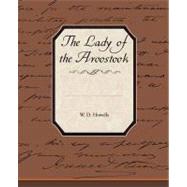The Lady of the Aroostook
, by Howells, William Dean- ISBN: 9781438522937 | 1438522932
- Cover: Paperback
- Copyright: 8/30/2009
William Howells was an American realist author and literary critic. In 1904 he was one of the first seven members chosen for the American Academy of Arts and Letters. Howells wrote plays, criticism, and essays about contemporary literary figures such as Ibsen, Zola, Verga, and, Tolstoy. These writings helped to establish their reputations in the United States. Perhaps his greatest influence came from his writing critically in support of many American writers. The Lady of the Aroostook was published in 1879. Howells uses The Lady of the Aroostook as a vehicle to examine the Europeans vs. Americans in their ability to solve moral issues. The heroine, Lydia Blood, is an American girl with an innocent nature and a solid moral background. She lives throughout the United States and is on a ship headed for Europe. The story begins, In the best room of a farm-house on the skirts of a village in the hills of Northern Massachusetts, there sat one morning in August three people who were not strangers to the house, but who had apparently assembled in the parlor as the place most in accord with an unaccustomed finery in their dress. One was an elderly woman with a plain, honest face, as kindly in expression as she could be perfectly sure she felt, and no more; she rocked herself softly in the haircloth arm-chair, and addressed as father the old man who sat at one end of the table between the windows, and drubbed noiselessly upon it with his stubbed fingers, while his lips, puckered to a whistle, emitted no sound. His face had that distinctly fresh-shaven effect which once a week is the advantage of shaving no oftener: here and there, in the deeper wrinkles, a frosty stubble had escaped the razor. He wore an old-fashioned, low black satin stock, over the top of which the linen of his unstarched collar contrived with difficulty to make itself seen; his high-crowned, lead-colored straw hat lay on the table before him. At the other end of the table sat a young girl, who leaned upon it with one arm, propping her averted face on her hand. The window was open beside her, and she was staring out upon the door-yard, where the hens were burrowing for coolness in the soft earth under the lilac bushes; from time to time she put her handkerchief to her eyes.






